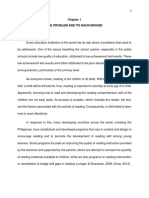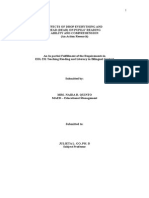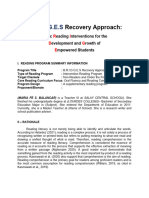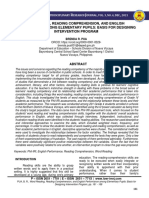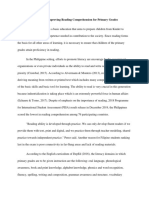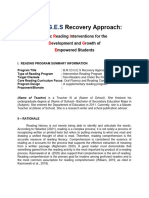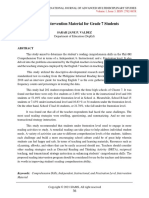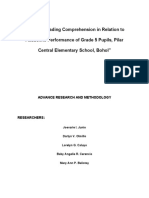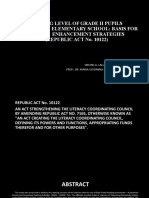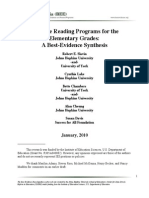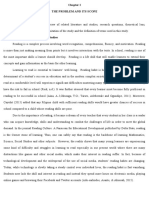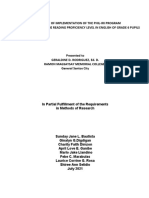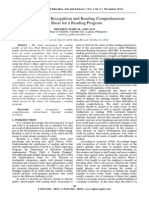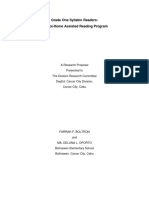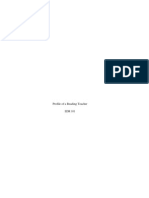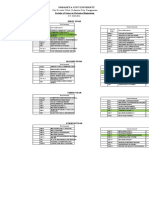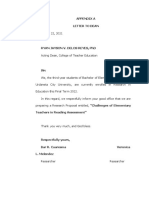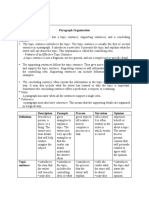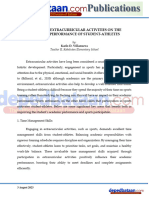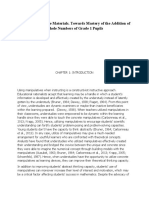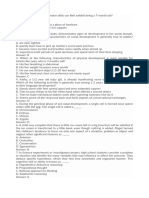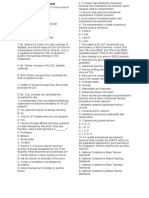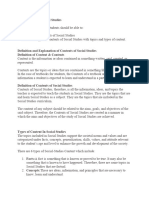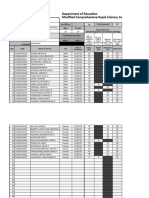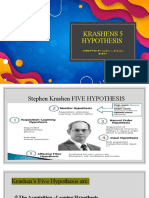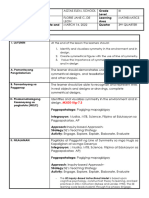0% found this document useful (0 votes)
239 views23 pagesChapter 1 and Chapter 2
The document discusses reading programs and assessments. It introduces the Philippine Informal Reading Inventory (Phil-IRI) which is an assessment tool used to determine a student's reading level through word recognition, reading comprehension, and graded passages. It also discusses the Every Child a Reader Program (ECARP) which aims to make every child a proficient reader through early reading interventions, assessments, and building a culture of reading. Theoretical frameworks discussed include bottom-up theory, top-down theory, and schema theory.
Uploaded by
Theodore VilaCopyright
© © All Rights Reserved
We take content rights seriously. If you suspect this is your content, claim it here.
Available Formats
Download as DOCX, PDF, TXT or read online on Scribd
0% found this document useful (0 votes)
239 views23 pagesChapter 1 and Chapter 2
The document discusses reading programs and assessments. It introduces the Philippine Informal Reading Inventory (Phil-IRI) which is an assessment tool used to determine a student's reading level through word recognition, reading comprehension, and graded passages. It also discusses the Every Child a Reader Program (ECARP) which aims to make every child a proficient reader through early reading interventions, assessments, and building a culture of reading. Theoretical frameworks discussed include bottom-up theory, top-down theory, and schema theory.
Uploaded by
Theodore VilaCopyright
© © All Rights Reserved
We take content rights seriously. If you suspect this is your content, claim it here.
Available Formats
Download as DOCX, PDF, TXT or read online on Scribd
/ 23

